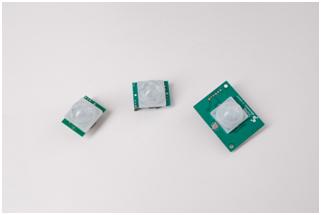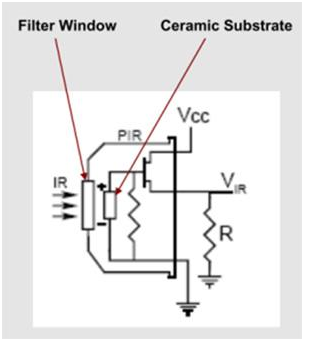Week 6 ( Fyp 1)
Title: Research and finding for the component of project
1. Power Supply
This circuit is a small +5V power supply, which is useful
when experimenting with digital electronics, and easy to build. Small
inexpensive wall tranformers with variable output voltage are available from
any electronics shop and supermarket. Those transformers are easily available,
but usually their voltage regulation is very poor, which makes then not very
usable for digital circuit experimenter unless a better regulation can be
achieved in some way.
This circuit can give +5V output at about 150 mA current,
but it can be increased to 1 A when good cooling is added to 7805 regulator
chip. The circuit has over overload and therminal protection.
2. Microcontroller
( ATMEL)
AT89C51 is an 8-bit microcontroller and belongs to
Atmel's 8051 family. ATMEL 89C51 has 4KB of Flash programmable and erasable
read only memory (PEROM) and 128 bytes of RAM. It can be erased and program to
a maximum of 1000 times.
In 40 pin AT89C51, there are four ports designated as P1,
P2, P3 and P0. All these ports are 8-bit bi-directional ports, i.e., they can
be used as both input and output ports. Except P0 which needs external
pull-ups, rest of the ports have internal pull-ups. When 1s are written to
these port pins, they are pulled high by the internal pull-ups and can be used
as inputs. These ports are also bit addressable and so their bits can also be
accessed individually.
3. PIR
Sensor
An infrared sensor is and electronic device, that emits
in order to sense some aspects of the surroundings. An IR sensor can measure
the heat of an object as well as detects the motion. These types of sensors
measures only infrared radiation, rather than emitting it like the sensor i'm
going to use that called Passive IR sensor, its detects a human being or solid
object that moving around within approximately 10m from the sensor.
4. Resistor
A resistor is a passive
two-terminal electrical component that implements electrical resistance as a
circuit element. Resistors act to reduce current flow, and, at the same time,
act to lower voltage levels within circuits. In electronic circuits, resistors
are used to limit current flow, to adjust signal levels, bias active elements,
and terminate transmission lines among other uses. High-power resistors that
can dissipate many watts of electrical power as heat may be used as part of motor
controls, in power distribution systems, or as test loads for generators. Fixed
resistors have resistances that only change slightly with temperature, time or
operating voltage. Variable resistors can be used to adjust circuit elements
(such as a volume control or a lamp dimmer), or as sensing devices for heat,
light, humidity, force, or chemical activity.
Resistors are common
elements of electrical networks and electronic circuits and are ubiquitous in
electronic equipment. Practical resistors as discrete components can be
composed of various compounds and forms. Resistors are also implemented within
integrated circuits.

A capacitor (originally known
as a condenser) is a passive two-terminal electrical component used to store
electrical energy temporarily in an electric field. The forms of practical
capacitors vary widely, but all contain at least two electrical conductors
(plates) separated by a dielectric (i.e. an insulator that can store energy by
becoming polarized). The conductors can be thin films, foils or sintered beads
of metal or conductive electrolyte, etc. The nonconducting dielectric acts to
increase the capacitor's charge capacity. A dielectric can be glass, ceramic,
plastic film, air, vacuum, paper, mica, oxide layer etc. Capacitors are widely
used as parts of electrical circuits in many common electrical devices. Unlike
a resistor, an ideal capacitor does not dissipate energy. Instead, a capacitor
stores energy in the form of an electrostatic field between its plates.
Capacitors are widely used
in electronic circuits for blocking direct current while allowing alternating
current to pass. In analog filter networks, they smooth the output of power
supplies. In resonant circuits they tune radios to particular frequencies. In
electric power transmission systems, they stabilize voltage and power flow.






